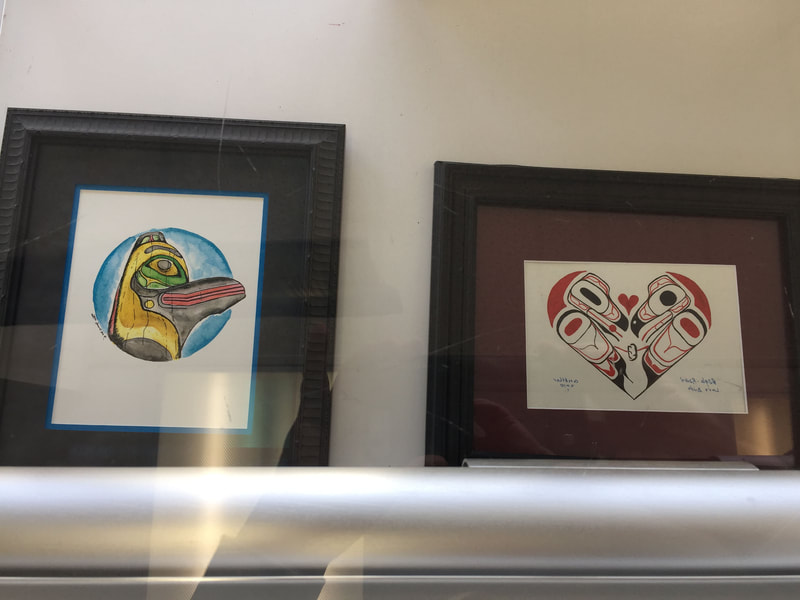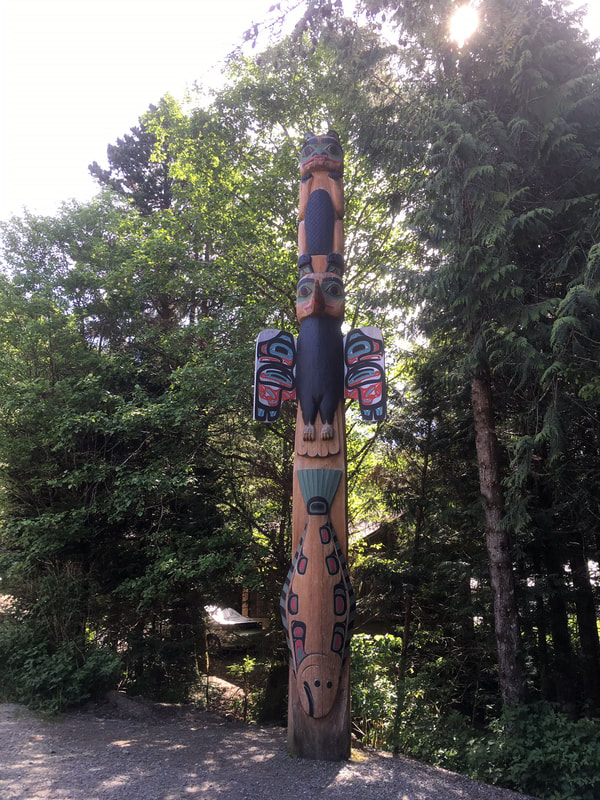|
This was a trip of a life-time and I highly recommend it to everyone - young and old. There is not only a lot of geography to learn about the glaciers but there is a majesty to seeing them right in front of you. The Eurodam was an excellent choice because the people who chose it were really interested in the history and culture of Alaska and its Native American and Russian influences. I can't imagine living in either Juneau or Sitka where the only way in and out is by boat or plane.
Two things that were really of interest to me as an artist was learning that the hand-made tools used to carve the totem poles by a master carver. Each mark that is made with their tools is like a signature or brushstroke of an artist. Our tour guide is a member of the Tlingit tribe. The Tlingit tribes' artwork is also frequently functional. Their artwork often consists of clothing and carvings, including canoes and totem poles, which are still well-recognized today. The tools generally used for carving are knives, traditionally made of shell, stone or bone, depending on the artist and what its purpose. The materials that are carved were bone of sheep or goat, and most often wood. Many types of wood are found in the southeastern panhandle of Alaska; some major species include cedar (both yellow and red) for totems and canoes, and finally, alder is used in making dishes and utensils for eating since that wood does not impart its taste onto food. Totem poles always tell a story, since the Tlingit culture traditional is an oral culture with minimal written history. Each animal on a totem pole represent family crests or tells a specific story. The totem pole of Seward who purchased Alaska from the Russians for the US was really interesting. He had traveled to AK 3 times before the agreement was reached. Each time he had been given a gift. He evidently never figured out that one is to give a gift of "equal" value when you return. So the figure has a red nose and ears to depict his embarrassment for not knowing. We visited a little shop in Ketchikan where the proprietor wanted to become a master carver. One has to start with learning to make the paint; traditionally this was done mostly by the women. “totem poles were painted with a type of fish-egg tempera, consisting of a mineral pigment mixed with a mordant of fresh salmon eggs and saliva. The colors originally were red, black, and green or blue. The red was obtained from hematite, the black from graphite and carbon, and green/blue from various copper ores common in the region.” She said that one would have to chew and chew to get the base to the right consistency before adding the color from berries or other materials. She didn't eat salmon for 4 years after learning this part of becoming a master carver. Today modern day paint is used instead.
1 Comment
|
AuthorSharing my paintings with others is one of the joys in my life. Educating others about how I paint and the media I use is very important and why I wanted to reach out through this blog. Hope you will add a comment about what you see. What else would you like to see here?. Archives
September 2020
www.dianagnadal.blogspot.com Link to Previous year blogs:
Categories |






























 RSS Feed
RSS Feed